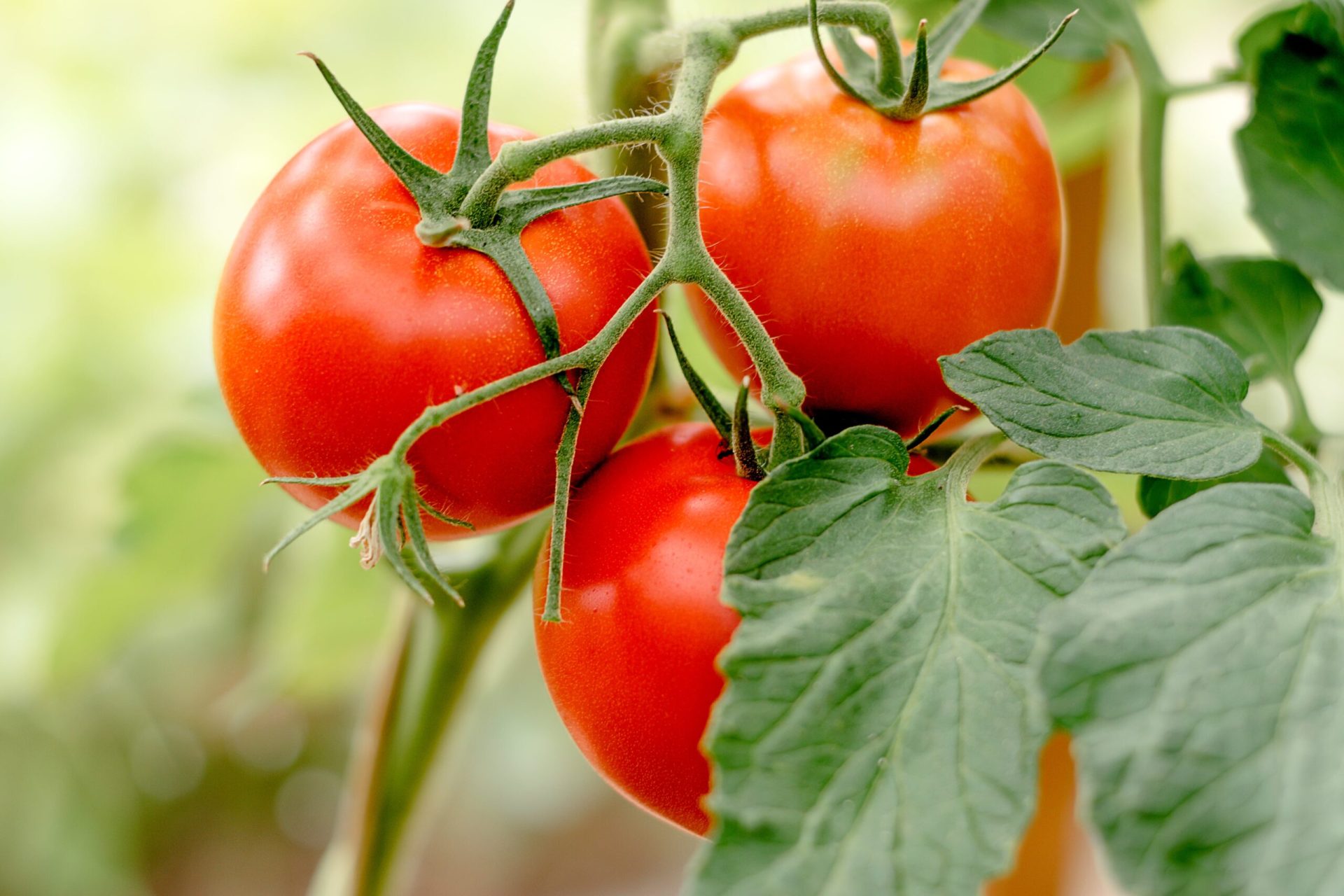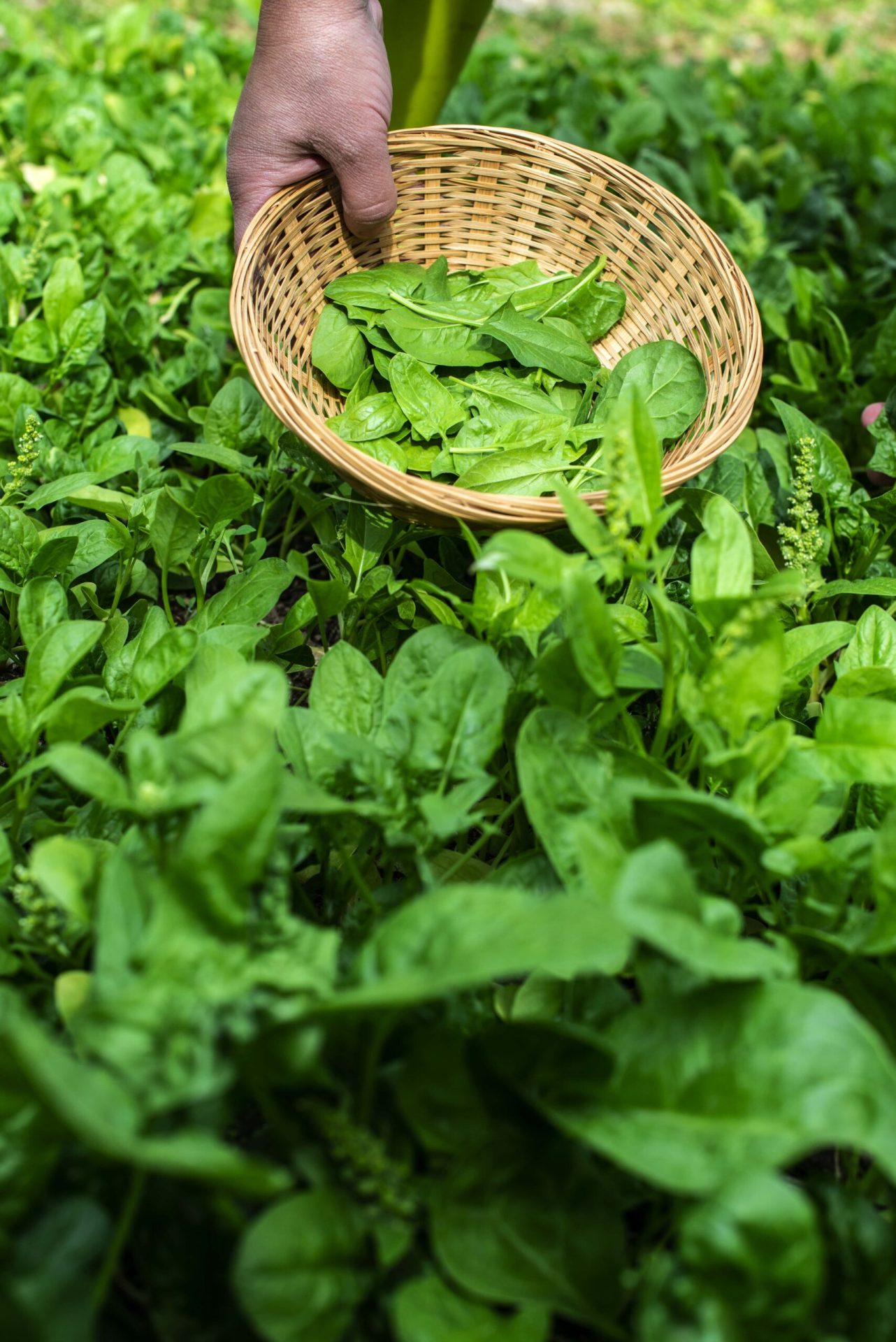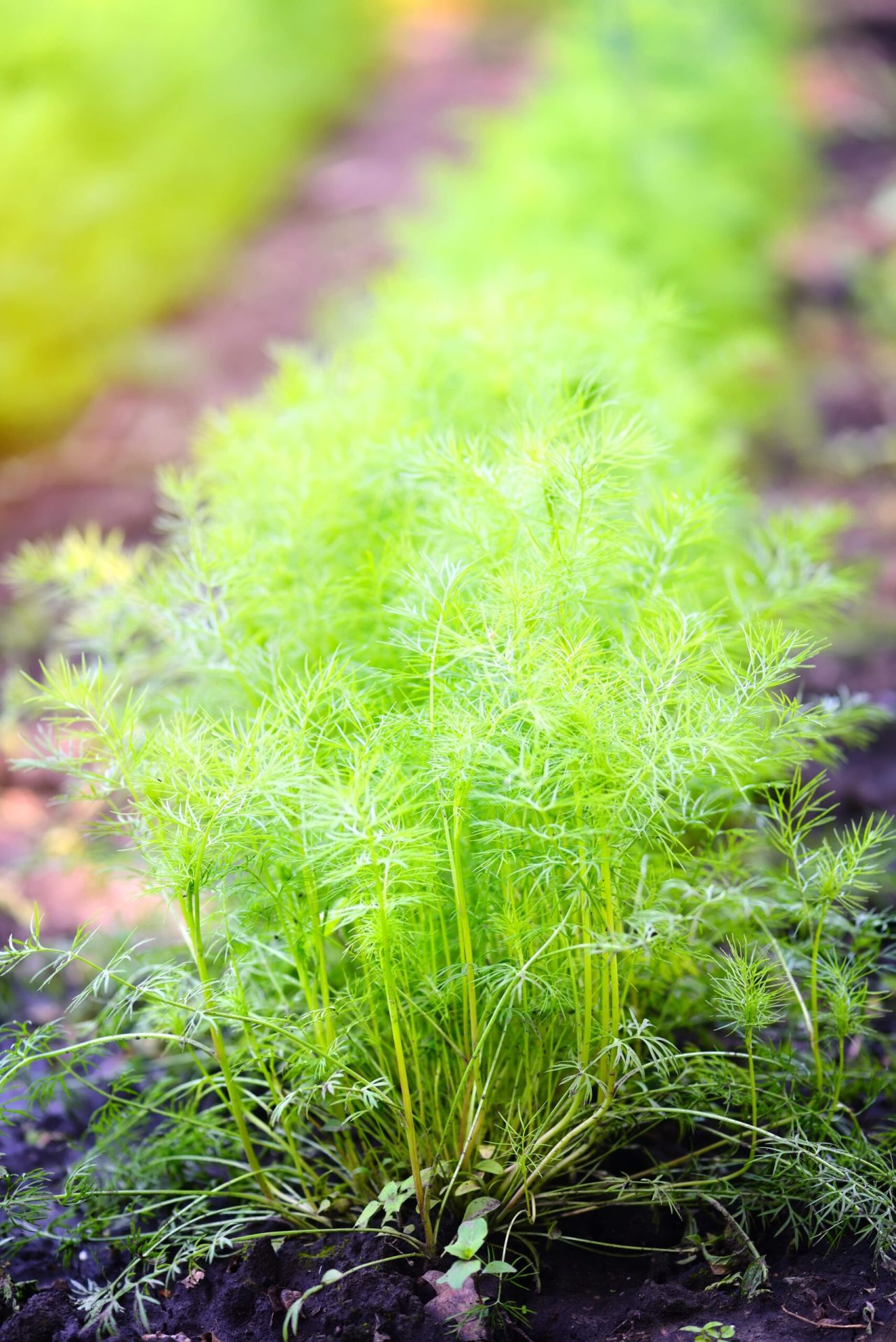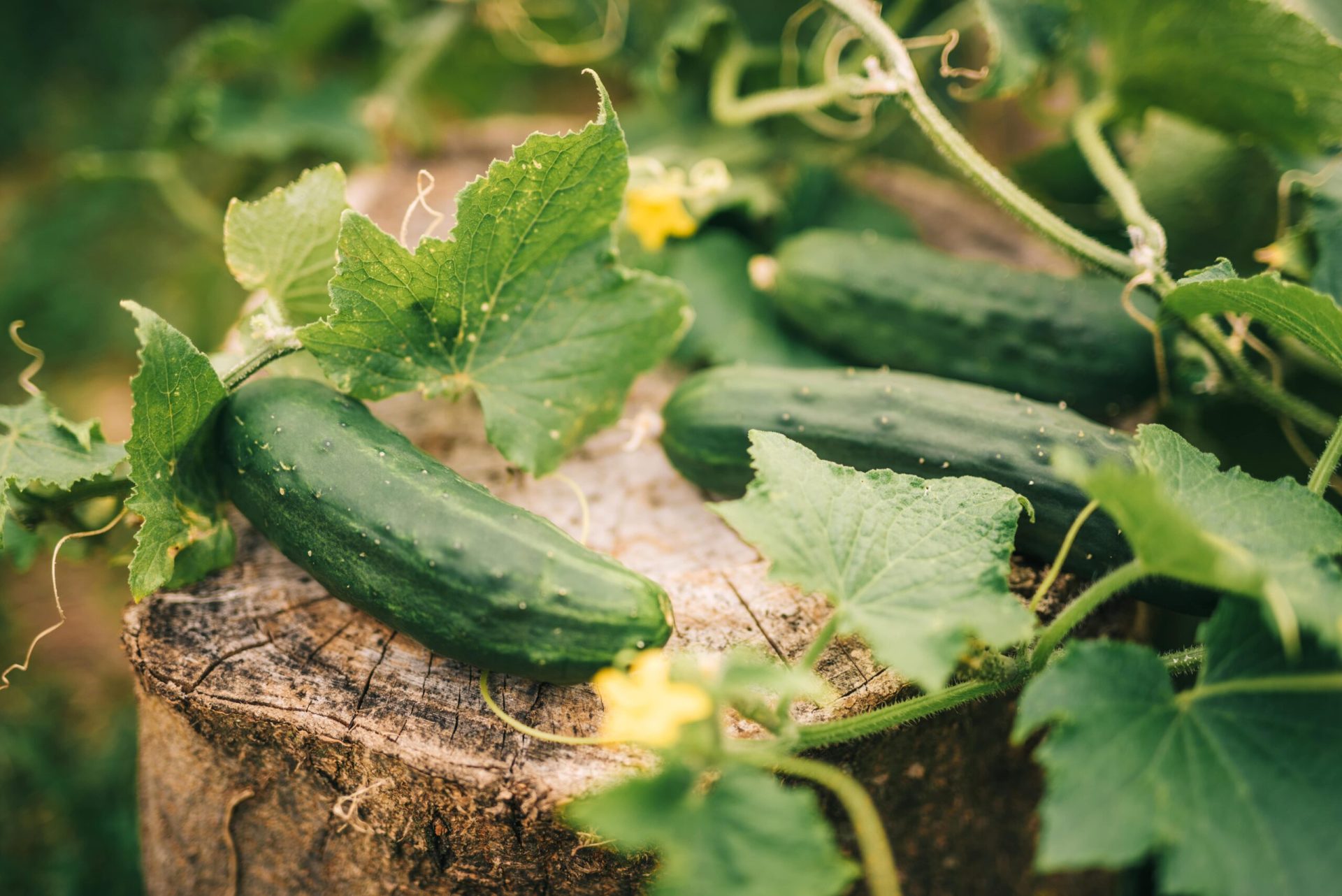Growing tomatoes is more than a gardening task. It requires effort, care, and patience. But all that work pays off, when you start to see your plants grow and produce red, juicy tomatoes.
Homegrown tomatoes are a summertime gardening favorite. Fortunately, they’re very easy to grow if you know the basics. Need some help to get started?
In this tomato growing guide, you will learn everything there is to know, from the lifecycle and growing stages of tomatoes to tips on storing and harvesting tomatoes. Nothing can compare the vibrant taste of homegrown tomatoes and enjoying the bountiful harvest. Keep reading to learn how to grow your own!
Growing Tomatoes 101: Step-by-Step Guide
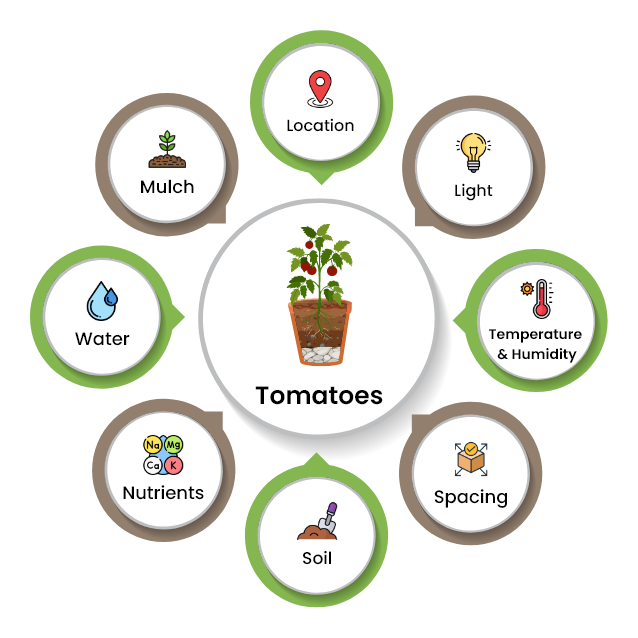
1. Location
Choose a spot in the garden that gets full sun and has loamy, well-draining soil. An area that’s protected from the wind will also help you avoid damage during summer storms.
2. Sunlight
Tomato plants require full sun. Choose a spot that receives 8 hours or more of direct sunlight. In hot, arid climates, however, tomato plants will benefit from some afternoon shade.
3. Temperature & Humidity
Tomato plants love the heat of summer, and they need warm temperatures to thrive. Temperatures below 50°F affect growth and the plant’s ability to produce flowers and fruit. Generally, tomatoes are heat-tolerant, but prefer temperatures below 90°F.
4. Spacing
Space tomato plants about 18-24 inches with 3-4 feet between rows. This allows proper airflow, which is important for pollination and to prevent disease. Spacing varies by variety, however. Refer to the seed pack or tag on your tomato transplants for recommended spacing for specific varieties.
5. Soil
Tomato plants require rich, well-draining soil. A loamy soil that’s slightly acidic and sandy works best. Prior to the growing season dig in some compost to your tomato bed and amend with perlite or gardening sand to improve drainage, if needed.
6. Fertilizers
Tomatoes are heavy feeders and require fertilization every 3 to 4 weeks during the season. Start by digging a rich, organic compost into the soil during planting.
Then, throughout the growing season, side-dress your tomatoes with compost or a fertilizer that is high in phosphorus and lower in nitrogen every 20-30 days. There are many organic fertilizers that are specially formulated for tomatoes.
7. Water
Tomato plants require 1 inch of water every week. A consistent watering schedule for tomato plants will result in larger, firmer and juicer tomatoes.
One tip: Water your tomato at the base of the plant and limit the amount of water that touches leaves. This can help prevent fungal diseases common to tomatoes.
8. Mulch
Add a 3- to 4-inch layer of mulch. The best mulch options for tomatoes include hay, grass clippings, and straw. Generally, the mulch should be loose, and allow air and moisture to pass through freely.
Mulching tomatoes helps conserve moisture, maintain soil temperatures, and reduce weed pressure.
How Long Does It Take for Tomatoes to Grow?
The time from seed to harvest for tomato plants varies by the variety. Most varieties however fruit within 60-100 days.
Beefsteak tomatoes, one of the most popular late-maturing varieties, can be harvested 85 days after planting. Juliet Tomatoes, however, are an early-maturing variety, can be harvested in 60 days.
In milder climates, it’s beneficial to start late-maturing tomatoes indoors about 4-6 weeks before last frost. This way you can eat garden-fresh tomatoes earlier in the summer.
Steps to Cultivate Tomato Plants from Seed
Here is a brief how to guide for growing tomatoes from seed:
- Start tomato seeds indoors approximately 4-8 weeks prior to the last frost of spring. Late-maturing varieties should be started earlier, for example.
- To start seeds indoors, use a soilless seed germination mix and adequately dampen the soil.
- Plant each tomato seed about a quarter inch deep and cover with soil.
- Position seed trays in a heated area beneath a plant grow lamp.
- When the seedlings reach 2-3 inches, transfer them into 3-inch pots. Plant them deep enough so that the soil level is up to their lowest leaves.
- About 10 days before you plant them outdoors, start hardening off your tomato seedlings.
- To harden off, gradually expose them to more sunlight each day, starting with just a few hours.
- When the overnight temperature stays consistently above 50°F, move the tomato seedlings outside.
How to Grow Tomato in Pots?
Determinate tomato varieties are best to grow in pots, because they grow to a specific size. Here are a few guidelines:
- Use a high-quality soilless mix that’s light and well-draining.
- Incorporate organic compost before planting to enhance the soil’s fertility.
- Dig a hole that’s deep enough to keep the soil line just below the plant’s lowest leaves.
- Tomato plants cultivated in pots or containers benefit from cages or additional support.
- Ensure sufficient watering as potted tomato plant tend to dry out faster in warm weather.
When to Plant Tomato Seeds?
Consider buying transplants or starting seeds indoors about 4-8 weeks before the last frost date. Most tomatoes are best started indoors, as they require warmer conditions to germinate.
For sowing seeds outdoors, wait until temperatures have risen. Generally, you will need overnight temperatures to stay above 50°F, which typically occurs about 2 weeks after last frost. Tomato seeds germinate more slowly when soil temperatures are below 70°.
Sowing times will depend on the variety of tomatoes you choose to grow. But for late-maturing tomatoes, indoor starts or purchasing transplants is often the best solution which will shorten the time-to-harvest.
How to Transplant Tomato Seedlings?
When transplanting tomatoes, dig a hole sufficiently deep. Your transplant should set so that the soil reaches just below the first set of healthy leaves.
If your tomato transplants are leggy, pinch off lower sets of leaves. And plant the stem deeper in the ground. The stem will spout roots, which can help fortify the plant and encourage a healthy rooting system.
Tomato Growing Stages
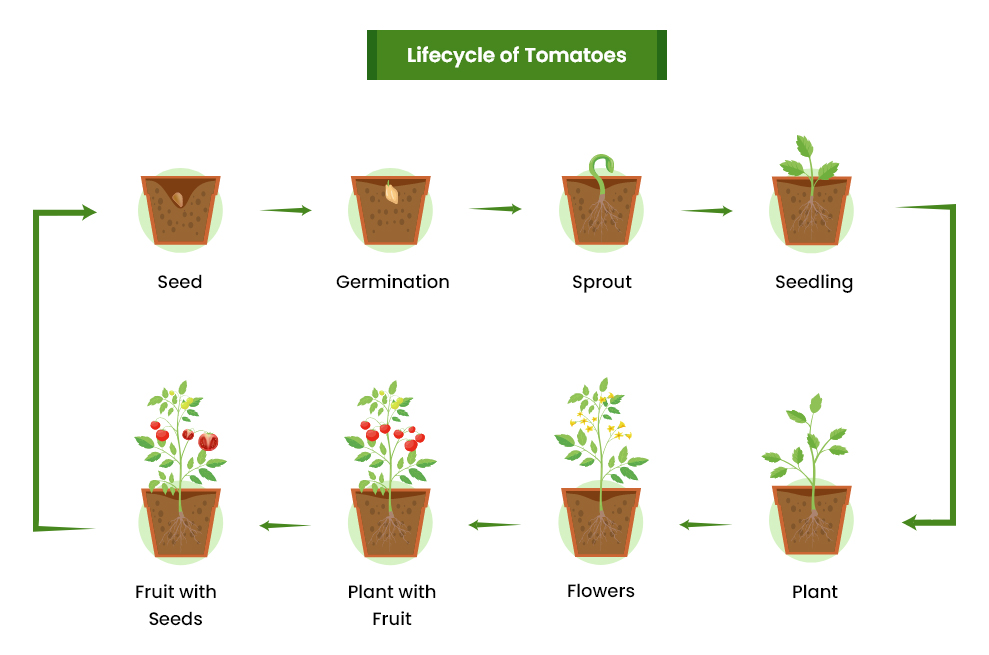
Germination
Tomato seeds are typically brown or tan and take 6-8 days to germinate. However, germination requires moist, warm conditions with soil temperatures between 65 and 85°F for best results.
Seedlings
When tomato seedlings first emerge, they develop cotyledons. All the leaves that appear after cotyledon are mature foliage. From germination, it takes a tomato seedling about 42-56 days to be ready to transplant into the garden.
Vegetative Growth
To ensure healthy fruit development, let tomato plants grow to a considerable size. Vegetative growth happens 60-90 days after germination.
Flowering
ut 60-90 days after germination, your tomato plants will begin to set flowers. Tomatoes produce bright yellow flowers, which bloom for a few days before wilting and falling off the plant. Tomato flowers develop into fruit after successful pollination.
Pollination
Typically, tomato plants pollinate naturally, with insects or the wind facilitating the growth. However, if the flowers fail to pollinate (e.g. flowers form, but no fruits), manual pollination may be required.
Fruiting
Flowers typically turn into fully sized, unripe tomatoes in about 14-21 days. They’re generally a pale green color.
Ripening
Green tomatoes will begin to ripe and change colors. Many varieties turn bright red; however, there’s a full spectrum of colors, from black (dark purple), to maroons, oranges, and yellows.
When to Harvest Tomato?
Harvest tomatoes when their skin is firm, shiny, and uniformly colored to enjoy the best flavor. The various harvesting stages include:
- Immature green
- Mature green
- Turning pink
- Half-ripe
- Red ripe
- Overripe
Mature green tomatoes are those that have not begun to start pink. Turning pink fruits show some pink color at the blossom end.
Half-ripe fruits show pink color over most or the entire surface. Ripe or red ripe fruits become entirely firm.
Depending on the climate and variety you have grown, tomatoes are ready to harvest about 60-70 days after transplanting. You should harvest regularly to promote fruit production.
Harvest tomatoes twice a week when the plants are about three months old. The right time to harvest tomatoes is early in the morning or evening.
How to Harvest Tomato?
Use garden pruners or twist the fruit until it breaks freely off the vine.
You should avoid pulling the fruit when picking it, as it can break tender tomato branches.
Ripe tomatoes often come off the vine with a simple twist. Don’t pull fruit from the vine as it might cause damage to the stem. Apply slight pressure using your thumb where the stem and calyx join.
Gently twist the fruit and break it off the steam.
Which tomato varieties should you prune?
Pruning allows airflow within a plant, reduces humidity levels, and speeds the drying process of remaining leaves.
There are two categories of tomato plants:
- Determinate – Determinate tomato varieties grow to a specific size and then stop growing.
- Indeterminate – Indeterminate tomato varieties continue to grow throughout the growing season.
Seed packets, seed catalogues, or plant identification stakes indicate which type of tomatoes you have. You should only prune indeterminate varieties of tomatoes.
When Should I Prune Tomato Plants?
Prune tomatoes in late June or early July when the first tomato flowers are open and easy to identify. Continue with the second and third pruning every 10 to 14 days following the first pruning method.
Stop pruning one to two weeks before the expected first harvest. It allows some time for tomato plants to produce canopies that protect fruits from sunscald.
How to Prune Tomatoes?
To prune tomatoes, identify the central part of the plant and locate any suckers. (Suckers are branches which form in the leaf axils).
You should identify the lowest flower/fruit cluster on the plant. Remove all the suckers from the plant except the first one below the lowest fruit cluster.
To remove suckers, pinch them close to the stem by using thumb and index finger or use hand scissors or hand pruners.
How should you store tomatoes?
If tomatoes are not ripe, they can be stored on the kitchen counter for a few days until they are ripe. Once they are ripe, either consume them or keep them in a refrigerator to preserve their freshnesse. Usually, ripe tomatoes can stay fresh in the refrigerator for two weeks.
Storing Tomatoes in the Fridge
Tomatoes stay fresh when stored in the refrigerator, but it depends on the ripeness of the tomatoes. The refrigeration process interrupts the ripening process, and storing unripe tomatoes in the fridge will prevent them from ripening fully.
You can refrigerate overripe tomatoes to slow down their spoiling process. You can use squishy and overripe tomatoes for tomato sauces, chutneys, and relishes.
Can You Freeze Tomatoes?
If you have an overabundance of tomatoes and are not going to use them soon, give them a deep rinse and let them dry. Remove their stems and freeze them in an airtight bag or container.
To eat frozen tomatoes, pop them out in tepid water. Leave them in the water for a few minutes; you can then peel off the skin easily. You can reserve frozen tomatoes for certain cooked dishes like tomato-based pasta sauce.
Determinate vs. Indeterminate Tomatoes
Tomato varieties fall under two categories: Determinate and indeterminate.
Determinate: Also known as bush varieties, determinate tomatoes grow up to 2 to 3 feet tall. This variety tends to provide numerous ripe tomatoes at one time.
They don’t grow many leaves after setting fruit and tend to fruit for a brief period. This tomato variety is best suited for small spaces and containers.
Indeterminate:This tomato variety is also known as vine variety. It produces large-sized slicing tomatoes from mid-to-late season. The plants continue to produce until the first frost in summer.
This variety experiences more leaf growth, and their production spreads evenly throughout the season. This variety is ideal for in-ground or raised-bed gardens.
Best Tomato Varieties for Home Gardens
Here are some of the most well-known tomato varieties to grow:
1. Plum Tomatoes
Plum tomatoes are great to use and make a delicious tomato sauce. Sometimes people refer to it as processing tomatoes or paste tomatoes. This variety is oblong and usually around 2 to 2.5 inches long.
It has fewer seeds, thicker flesh, and provides less juice than heirloom varieties. Gardeners breed them with canning and preserving in mind.
This variety is pulpy and has an easy-to-remove seeds compartment. Many tomato varieties are bred to shed their skins for easy processing into the sauce. This variety lacks juiciness and people use it as a topping on pizza or to make sundried tomatoes.
2. Beefsteak Tomatoes
Beefsteak tomatoes are best for eating fresh off the vine. This tomato variety is big, juicy, flavorful, and proves the best summer-time treat. They have a meaty texture and an incredible tomato flavor.
They are easy to grow in any backyard, and you will find them in farmers’ markets and other local market gardens.
Beefsteak tomatoes are larger in size, around 3 to 4 inches in diameter, and weigh around a pound. Some tomatoes are slightly flattened, lobe-shaped, and have small seed pockets. Sliced beefsteak tomatoes are used in sandwiches, salads, pasta, burgers and cooked dishes like frittatas.
3. Cherry Tomatoes
Cherry tomatoes are small bite-sized tomatoes and taste similar to wild tomatoes. When this variety ripens, it becomes extremely juicy and bursts when pressed. Small cherry tomatoes come in various colors like yellow, red, orange, and purple, and are less than an inch in size.
This variety is highly versatile and is juicy yet firm. It perfectly suits fresh snacking, and you can use it in veggies, salads, wraps, and grilling. They are also ideal as appetizers; you can lace them on skewers or add them to your favorite pasta salad!
Common Pests & Diseases
Various pests and diseases affect the growth and yield of tomato plants. Pest problems that affect tomato plants are aphids, whiteflies, hornworms, cutworms, thrips, spider mites, flea beetles, and tomato fruit worm.
Several plant diseases affect plant growth. These include early blight, late blight, wilt diseases, tomato blossom end rot, leaf spot, tomato mosaic virus, and bacterial spot.
Tomato Companion Planting
Companion plants help improve plant health and yield in various ways. They reduce pests, enhance flavor, increase production, and help prevent diseases in the crop.
Some of the best companion plants for tomatoes are:
- Beans & Peas
- Carrots
- Beets & Radishes
- Celery
- Parsley
- Asparagus
- Cucumber and squash
- Lettuce
- Onion, garlic, and other alliums
- Borage
- Calendula
- Lemon balm
- Chives
- Mint
- Nasturtium
- Marigold
- Lavender
- Basil
- Sage, parsley, thyme, and oregano

